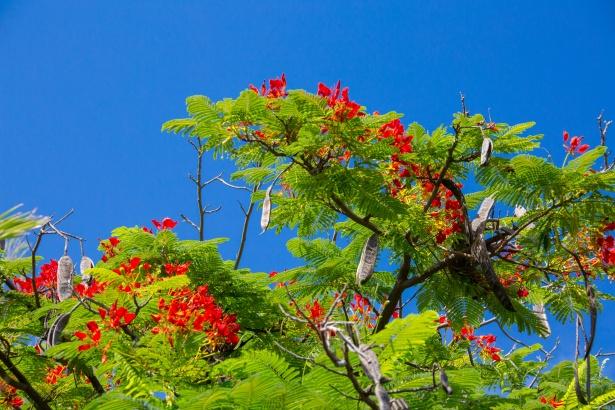Whenever you’re in Georgetown and walking along Main Street or Camp Street there is no way that you can miss these majestic red trees producing a gorgeous, dense canopy, one which resembles fire, that offers shade for yards and sidewalks. At present many of these trees are in full bloom and are easily identified in Brickdam, Main Street, East Coast, and East Bank Demerara.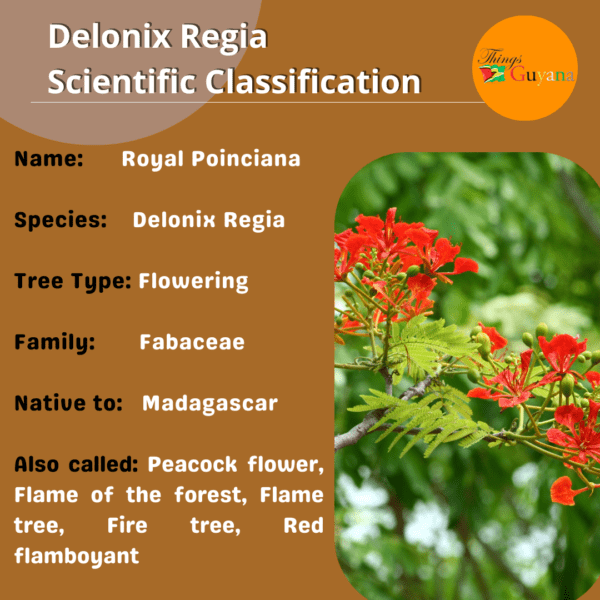
Description
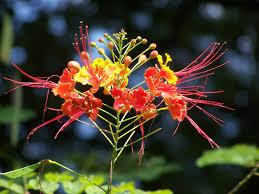
Photo of the red flamboyant flower. Photo Source: https://pxhere.com/en/photo/613662
This tree is a flowering plant of the bean family. It has fern-like leaves and a flamboyant display of red and orange flowers. The petals have a length of 8 cm. In the middle, there can be seen an upright, fifth petal which is usually larger in size compared to the other petals. This upright petal is spotted yellow and white.
You can find three varieties of Flamboyant flowers.
- Orange-Red
- Deep Red
- Golden / Yellow
The tree itself grows up to 13 meters and with branches that spread wide, it is quite shady. The trunk of the red flamboyant is smooth but can often be found slightly cracked. The trunk reaches up to 2m in width. The feathery leaves can grow from 10 to 20 cm long. Seeds are small and weigh 0.4 grams.
Distribution
Delonix regia is indigenous to the dry deciduous forests of Madagascar, and it has been introduced throughout the world from tropical regions to subtropical areas such as North America, South America, the Caribbean, India, Europe, and the Middle East. The flamboyant grows best in well-drained soils with a pH range from acidic to alkaline. It can also tolerate minor saltwater, especially from salt winds. In India, it was discovered that seedlings had good growth characteristics and were suitable for planting and providing fodder in lateritic soils.
Lateritic soil – laterite, is a soil layer that is rich in iron oxide and derived from a wide variety of rocks weathering under strongly oxidizing and leaching conditions.
Uses
The flamboyant is primarily used as decoration. For its stunning flowers and to provide shade for cows or other tree species in plantations, such as tea plantations, it is primarily planted in parks and avenues.
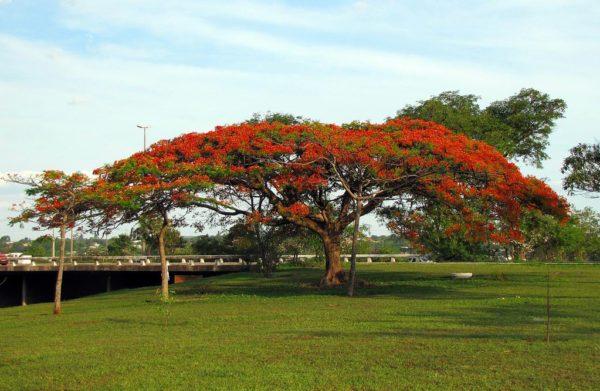
Photo of the red flamboyant plant providing shade. Photo Source: https://pxhere.com/en/photo/1202566
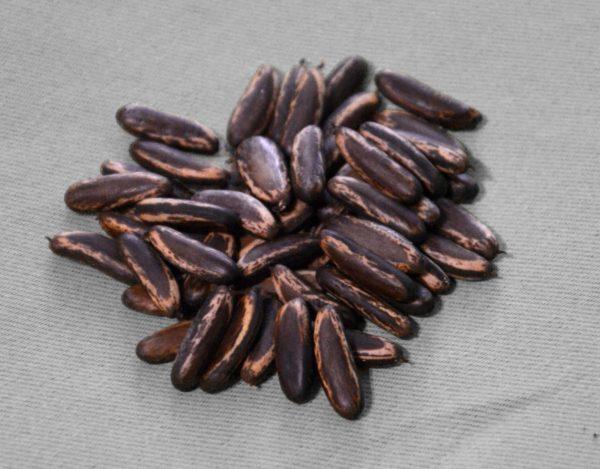
Photo showing the red flamboyant seeds can be used as food. Photo Source: https://www.feedipedia.org/node/308
Delonix regia seed meal can be fed to farm animals, and the leaves serve as feed for livestock. The blossoms provide bees with a good and plentiful source of food. The seeds can be fashioned into collar pearls.
You can use the wood for a fire, as well as the woody pods. The wood can be utilized for pirogues, fence posts, and simple buildings.
Symbolism
The red flamboyant plant is grown in Puerto Rico and was brought by the Spaniards. The showy flowers are appealing but for Puerto Ricans, this tree is a symbolic tree that symbolizes pride, hope, and rest.
-
Flamboyant Tree Symbolizes Hope
The flamboyant tree or Delonix Regia can survive droughts and rough conditions, just like Jericho’s miraculous Rose that calls good luck, success, love, money, and much more inside, when kept in homes.
-
Flamboyant Tree Symbolizes Tranquility
Flamboyant Tree grows so tall and has a solid trunk that offers a great shade and lets you enjoy summer afternoons and evenings while resting in a cool place.
Therefore, it also symbolizes rest and tranquility.
- In the Indian state of Kerala, royal poinciana is called kaalvarippoo which means “the flower of Calvary”. There is a popular belief among Saint Thomas Christians of Kerala that when Jesus was crucified, there was a small royal poinciana tree nearby his cross. It is believed that the blood of Jesus Christ was shed over the flowers of the tree and this is how the flowers of royal poinciana got a sharp red color. It is also known as Vaaga in many areas of Kerala.
- Its blossom is the national flower of St. Kitts & Nevis and in May 2018 the royal poinciana was adopted by the city of Key West as its official tree.
- In Vietnam, this tree is called Phượng vỹ, or “phoenix’s tail”, and is a popular urban tree in much of Vietnam. Its flowering season is May–July, which coincides with the end of the school year in Vietnam. Because of this timing, the flower of poinciana is sometimes called the “pupil’s flower”.
References:
- https://www.feedipedia.org/node/308
- https://blog.inspireuplift.com/flamboyant-tree/
- https://en.wikipedia.org/wiki/Delonix_regia

